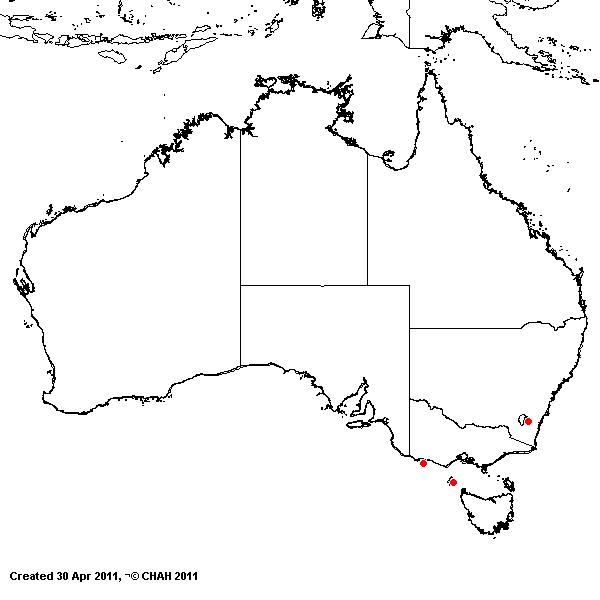Leymus arenarius* (L.) Hochst. Flora
31: 118 (1848)
Classification.
(GPWG 2001) : Subfamily Pooideae. Tribe Triticeae.
Basionym and/or
Replacement Name: Elymus
arenarius L., Sp. Pl. 1: 83 (1753).
Type of Basionym or
Protologue Information: LT: (LINN-100.1). LT designated by Bowden, Canad.
J. Bot. 42: 567 (1964).
Key references
(books and floras): [2002] D.Sharp & B.K.Simon, AusGrass, Grasses of
Australia, [2009] A.Wilson (ed.). Flora of Australia, Vol 44A. Poaceae
2 (95).
Habit.
Perennial. Rhizomes present, elongated. Culms erect or geniculately ascending,
60–200 cm tall. Leaves cauline. Leaf-sheaths glabrous on surface. Leaf-sheath
auricles present. Ligule an eciliate membrane, 0.3–1 mm long, truncate.
Leaf-blades flat or involute, 20–60 cm long, 8–22 mm wide. Leaf-blade surface
scaberulous.
Inflorescence.
Inflorescence solid, a raceme. Racemes 1, erect, 15–35 cm long.
Spikelets.
Spikelets sessile, 2 in the cluster. Fertile spikelets comprising 3–6 fertile
floret(s), with diminished florets at the apex, oblong or cuneate, laterally
compressed, 20–32 mm long.
Glumes. Glumes
similar, thinner than fertile lemma or similar to fertile lemma in texture.
Lower glume lanceolate, coriaceous, keeled, 1-keeled, 3–5 -nerved. Lower glume
surface indumented. Upper glume lanceolate, 18–30 mm long, coriaceous, keeled,
3–5 -nerved. Upper glume surface indumented.
Florets.
Fertile lemma 15–25 mm long, keeled, 7 -nerved. Lemma surface indumented. Palea
2 -nerved. Lodicules present. Anthers 3. Grain 10 mm long.
Continental
Distribution: Europe, Temperate Asia, Australasia, North America, and South
America.
Australian
Distribution: Tasmania.
Tasmania: King
Island.




